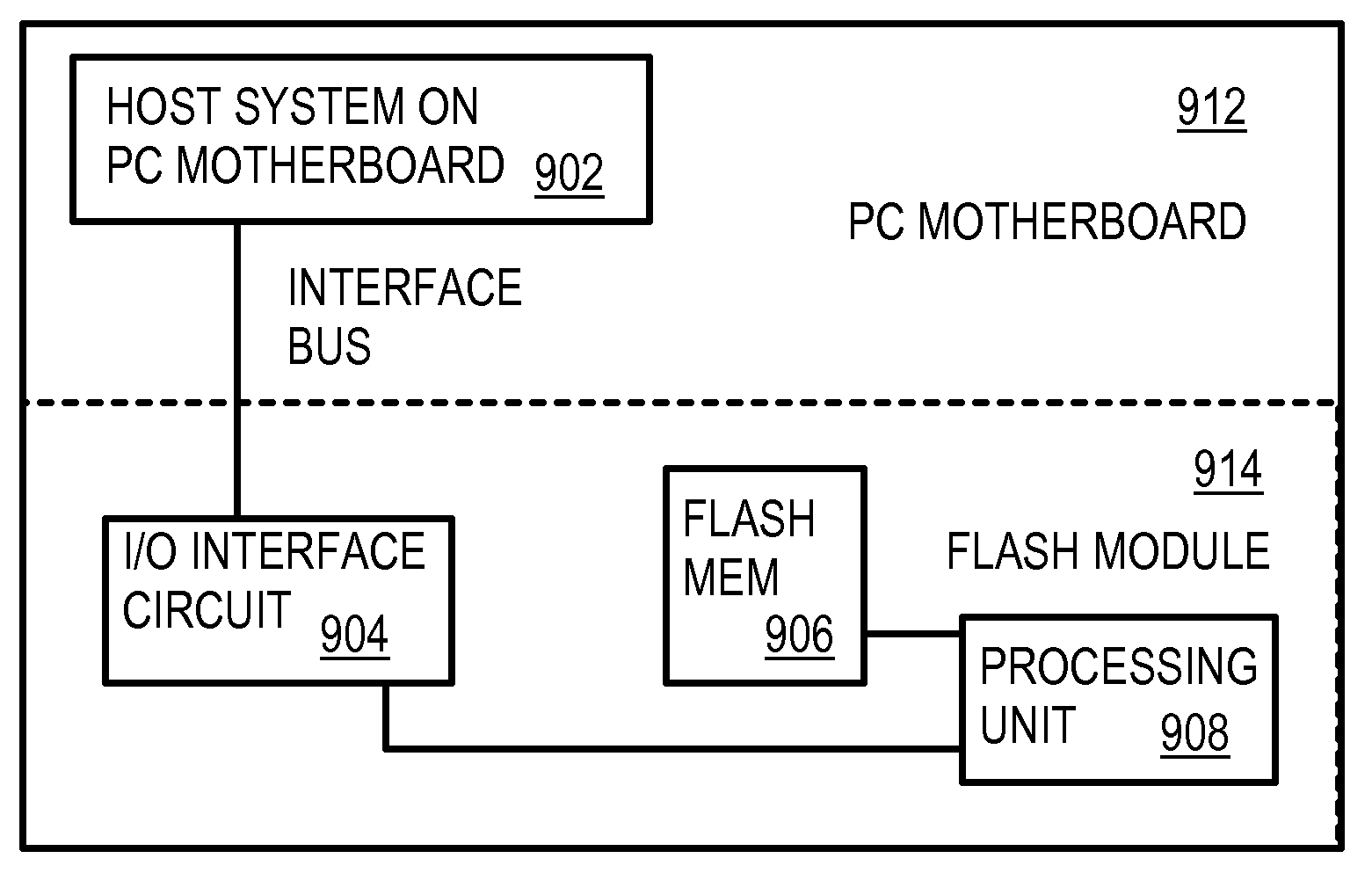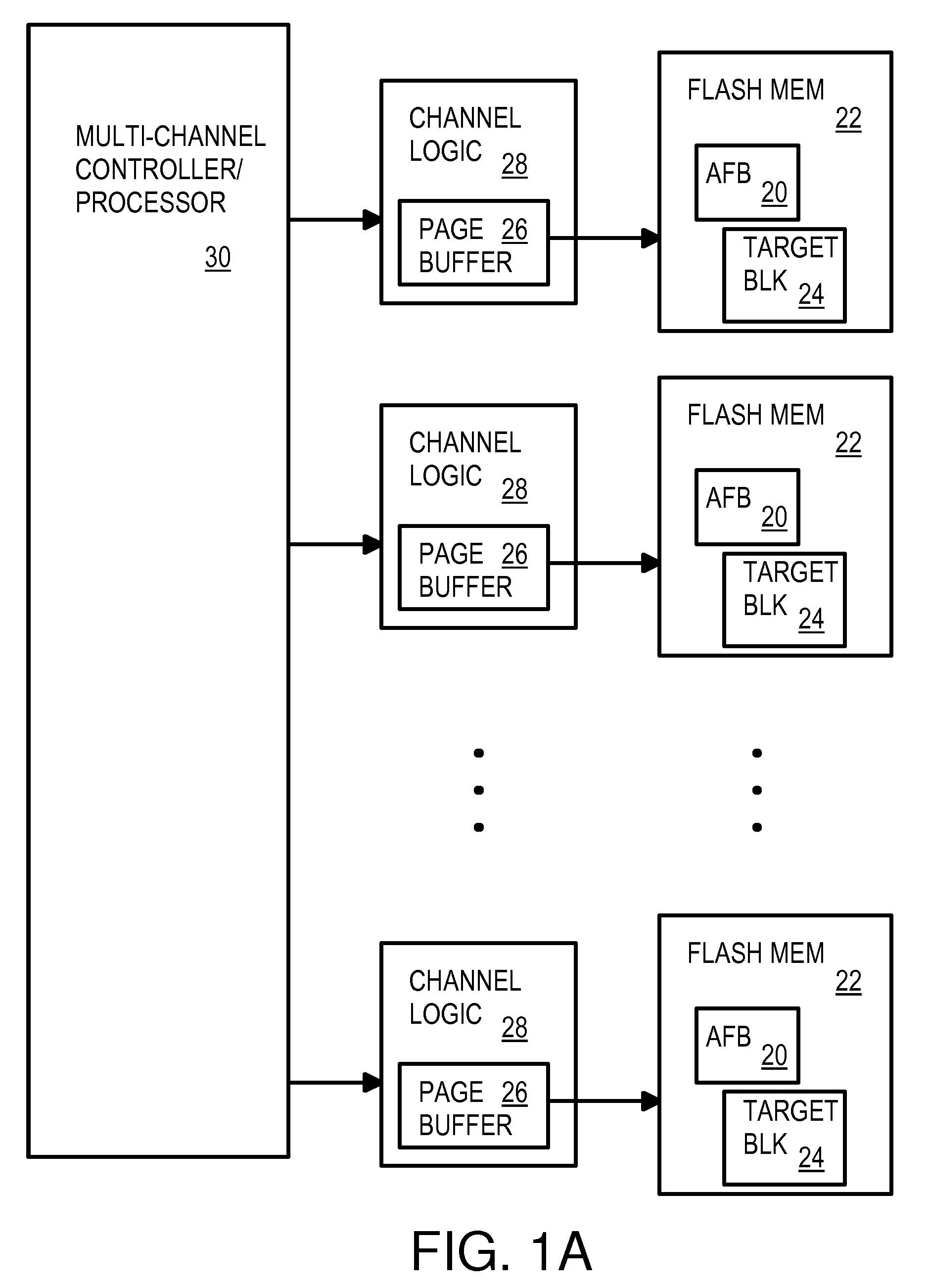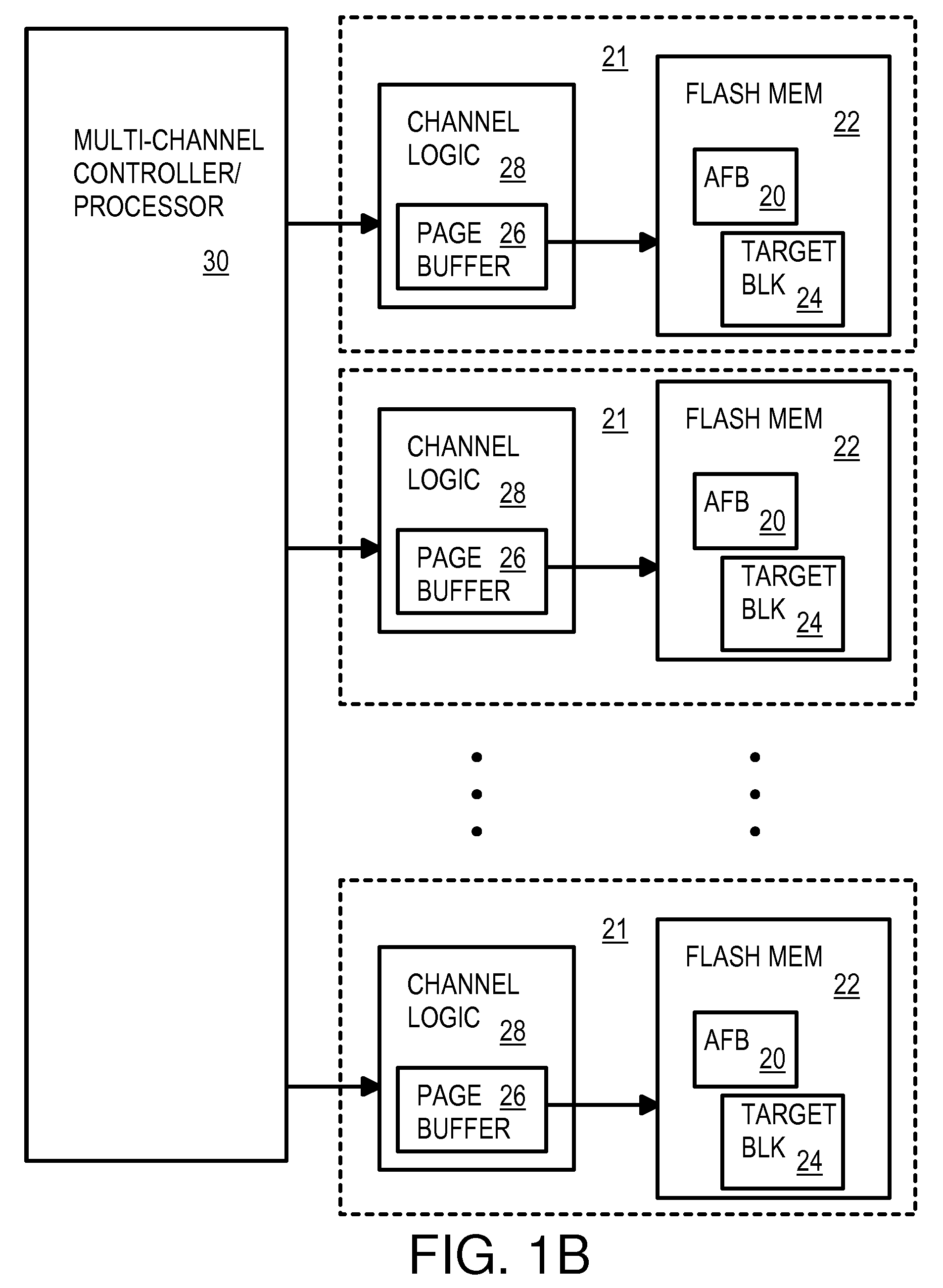Multi-Operation Write Aggregator Using a Page Buffer and a Scratch Flash Block in Each of Multiple Channels of a Large Array of Flash Memory to Reduce Block Wear
a multi-operation write and scratch flash technology, applied in the field of flash memory systems, can solve the problems of mlc flash performance, flash wearout and unreliability, and limitations of nand flash, and achieve the effect of reducing performance, reliability and durability of mlc flash
- Summary
- Abstract
- Description
- Claims
- Application Information
AI Technical Summary
Problems solved by technology
Method used
Image
Examples
example a
[0114]Assume that six AFB blocks do not store valid data. Moreover, the host transmits data in a sequence of three sectors, two sectors, and one sector, separately, to the flash system using three write requests with different target addresses.
[0115]FIG. 11A shows channel A being used to send host data in page buffer A of multi-page buffer 314 to AFB block #1, the first entry in AFB tracking table 350. Channel B is being used to copy host data in page buffer B to AFB block #2, and channel C is being used to copy host data in page buffer C to AFB block #3.
[0116]FIG. 11B shows the timing where host data is accumulated into page buffer A then copied to AFB #1. Host data from the second transaction is accumulated to page buffer B and then copied over channel B to AFB #2, and host data from the third transaction is accumulated to page buffer C and then copied over channel C to AFB #3.
[0117]FIGS. 12A-D show the AFB tracking table for the example of FIGS. 11A-B. AFB tracking table 350 has ...
example c
[0131]FIGS. 13A-B show the AFB tracking table for example C and FIGS. 14A-B.
[0132]Assume that six AFB blocks have stored valid data, as shown in FIG. 13A. The host sends a write request to the device with a target address=0111—0000. The current writing address does not match the target LSA of any AFB block in AFB tracking table 350.
[0133]Step 1: Receive a write request. The Multiple AFB Block Management sets CDF=1 and AMF=0. Receive two data sectors from the host, and write the sectors sequentially in Buffer A through Channel A.
[0134]Step 2: Start the flow chart of FIG. 9 to search for an available AFB block to copy the page buffer data into. FIG. 13A shows that all of the AFB blocks have stored valid data; none are empty and available.
[0135]Step 3: Duplicate the valid data stored in AFB Block 1 to the corresponding page of the target physical block.
[0136]Step 4: Remove the entry of AFB Block 1. (Details are shown in FIG. 10)
[0137]Step 5: Assign an available physical block to be AFB...
example d
[0142]FIGS. 15A-B show the AFB tracking table for example D. Assume that three AFB blocks have stored valid data, as shown in FIG. 15A. In this example, the entry of AFB Block 3 needs to be removed from AFB tracking table 350.
[0143]Step 1: Start the flow chart of FIG. 10 to remove the third entry of AFB tracking table 350. (k=3 and N=6)
[0144]Step 2: Set bank_num=1034 and page_num=11.
[0145]Step 3: Duplicate the entry of AFB Block 4 to that of Block 3.
[0146]Step 4: Duplicate the entry of AFB Block 5 to that of Block 4.
[0147]Step 5: Duplicate the entry of AFB Block 6 to that of Block 5.
[0148]Step 6: Modify the entry of AFB Block 6 to change the physical block number and last page number to bank_num and page_num, respectively. Moreover, set the valid data flag to be zero. Finally, the modified AFB tracking table is shown in FIG. 15B.
[0149]After removing the entry of AFB Block 3, the order of available AFB blocks is assigned numbers 3 to 6. Note that the previously removed AFB block is t...
PUM
 Login to View More
Login to View More Abstract
Description
Claims
Application Information
 Login to View More
Login to View More - R&D
- Intellectual Property
- Life Sciences
- Materials
- Tech Scout
- Unparalleled Data Quality
- Higher Quality Content
- 60% Fewer Hallucinations
Browse by: Latest US Patents, China's latest patents, Technical Efficacy Thesaurus, Application Domain, Technology Topic, Popular Technical Reports.
© 2025 PatSnap. All rights reserved.Legal|Privacy policy|Modern Slavery Act Transparency Statement|Sitemap|About US| Contact US: help@patsnap.com



